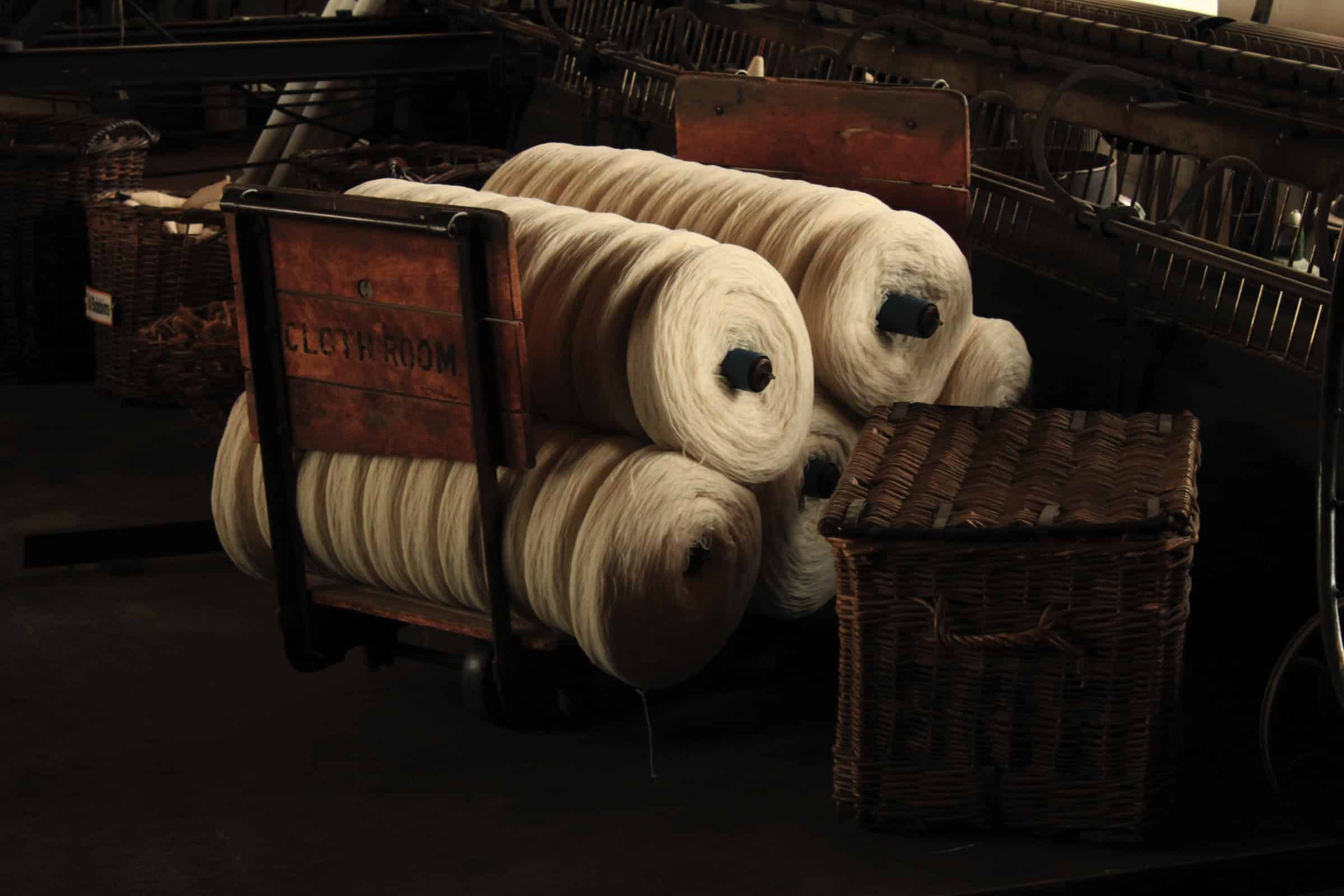According to The Journal of the Royal Society of Antiquaries of Ireland, this country began printing on cloth in the 18th century, primarily on linen and cotton.
Source : https://www.jstor.org/stable/25513846
Wool, tweed, lace and linen
The sense of a very strong identity is linked to the use of original fabrics. We just saw Donegal tweed. We also know the great adventure of Tweed Magee, founded in 1866, which continues to manufacture its tweed in Donegal, as Patrick Temple from Magee clearly explains in the documentary: “The production of our fabrics is still Irish, which is rather rare these days.
Linen was used for “outerwear” from the 18th century (with prints from the 1750s). Then, as we have just seen, the Irish lace industry which enjoyed significant support in the 19th century.
Today, Aoibheann McNamara and Triona Lillis who jointly design The Tweed Project brand assure that “We are totally steeped in tradition, both in our production and in our inspiration”.
For example, the two designers are inspired a lot by the fishermen of Inis Oírr, and facing these Aran Islands, on the coast, by the traditional blankets worn by the women of Galway.
Similarly, inspired by loose and comfortable traditional clothing, they use Donegal tweeds for modern gray or black tracksuits. Like many contemporary designers, they “look for influences beyond Ireland to mix them with their local fabrics”.

Wool has been the gold of Irish fashion throughout the centuries. During various episodes of the television series, many of the designers interviewed – Orla Kiely “The queen of prints” from County Dublin South, Chris Weiniger from the Donegal Yarns spinning mill or Pearl Reddington who creates knits – express their passion for knitting. wool and evoke the traditions of knitting over at least two centuries.
“Wool was the most accessible and cheapest material for most traditional forms of Irish dress.” Knitting was introduced in the 17th century, while wool was spun as early as the Bronze Age; Clothing dating from the 8th century BC has thus been found in Ulster.
In the last century, Aran jumpers enjoyed great notoriety in the 1930s “at a time when we were questioning our own identity,” explains Siún Ní Dhuinn. After the Second World War, they became famous thanks to the musical group The Clancy Brothers and personalities who carried them such as actors Grace Kelly and Steve McQueen.
New fabrics, new techniques are part of the game. In County Monaghan, Helen Steele uses a unique process of throwing paints onto a large sheet, reminiscent of the technique of painter Jackson Pollock.
Then she photographs the flowing paint and the images (with a predilection for fluorescent colors) are sent to the printer, the fabrics come back and are cut. “Unlike most stylists, we work on the shape first. »
Source: https://www.nolwennfaligot.fr/post/la-mode-irlandais